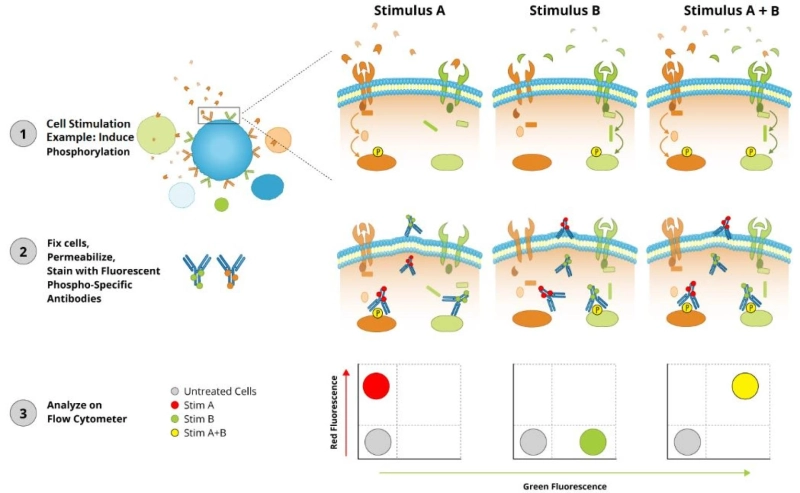Flow cytometry is a powerful technique used in cell biology and immunology to analyze and sort cells based on their physical and chemical characteristics. The method involves the suspension of cells in a fluid stream and their passage through an instrument called a flow cytometer. As cells pass through the instrument, they are interrogated by lasers, and various detectors capture signals that provide information about the cells.
Sample Preparation:
Cells of interest are usually labeled with fluorescent dyes or antibodies conjugated to fluorochromes.The sample is suspended in a buffer to maintain cell viability and prevent clumping.Fluidics System:
The sample is injected into a sheath fluid, which helps to align the cells into a single-file stream for analysis.Laser Excitation:
The flow cytometer uses one or more lasers to illuminate the cells as they pass through the fluid stream.The lasers excite the fluorochromes attached to the cells, causing them to emit fluorescent light.Scatter Detection:
Forward scatter (FSC) measures the intensity of light scattered in the forward direction, which is proportional to cell size.Side scatter (SSC) measures light scattered at right angles to the laser beam and provides information about cell granularity or complexity.Fluorescence Detection:
Multiple detectors capture the emitted fluorescence from the labeled cells.Each detector is set to capture light at specific wavelengths corresponding to the fluorochromes used.Data Analysis:
The data collected from scatter and fluorescence detectors are analyzed to provide information about cell size, granularity, and specific surface markers.Flow cytometry software is used to generate plots, histograms, and statistics for further interpretation.Cell Sorting (optional):
In addition to analysis, flow cytometers equipped with sorting capabilities can physically separate cells based on their characteristics.This is useful for isolating specific cell populations for further study.Flow cytometry is widely used in various fields, including immunology, hematology, cancer research, and microbiology. Researchers and clinicians can use this technique to study cell populations, identify specific cell types, quantify biomarkers, and assess cellular function. The high-throughput nature and the ability to analyze multiple parameters simultaneously make flow cytometry a versatile tool in biomedical research and clinical diagnostics.



